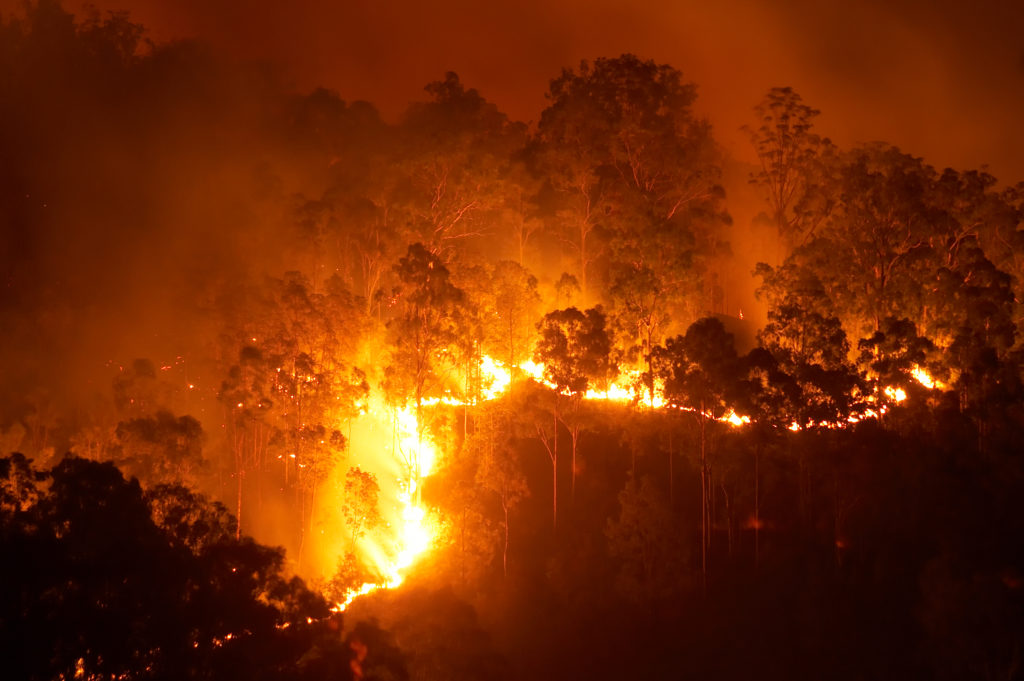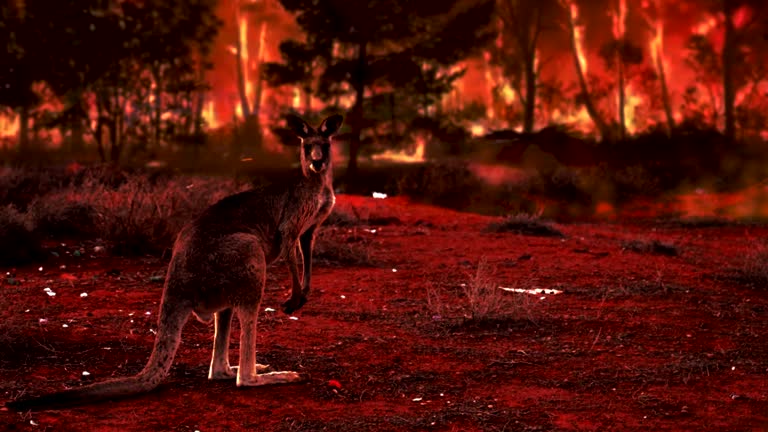Bushfire Risk Assessment Demystified: Exactly How to Analyze and Act Upon Your Outcomes
Wiki Article
The Significance of Bushfire Monitoring in Fire Protection
In the realm of fire defense, the relevance of reliable bushfire monitoring can not be downplayed. As areas globally face boosting instances of wildfires, the positive method to stop and alleviating these natural disasters through critical bushfire management strategies has actually become a crucial component. Past the instant risk to human life and property, the interaction in between bushfire administration and environmental preservation, area participation, and environment modification postures complicated challenges that need extensive solutions.Relevance of Proactive Bushfire Avoidance
Proactive bushfire prevention methods are necessary in reducing the ruining influences of wildfires on environments and communities. By taking preventative actions prior to a bushfire happens, the risks connected with these natural catastrophes can be considerably reduced. One crucial aspect of aggressive bushfire avoidance is fuel management. This entails lowering the amount of flammable product, such as dead vegetation and completely dry fallen leaves, that can work as fuel for fires. Gas monitoring techniques include suggested burns, where regulated fires are intentionally lit to minimize the accumulation of flammable product.In addition, creating firebreaks - cleared locations where greenery is tactically gotten rid of to produce an obstacle to slow down or stop the progression of a bushfire - is another crucial proactive action. By executing these approaches, the spread of wildfires can be restricted, protecting both human lives and the setting. In addition, enlightening the public on fire safety and security techniques and advertising area recognition regarding the significance of bushfire avoidance are crucial components of aggressive methods. Inevitably, aggressive bushfire avoidance plays a significant role in protecting communities and environments from the harmful influences of wildfires.
Function of Neighborhood Interaction in Fire Defense
Involving the community in fire protection efforts is essential to enhancing the performance of aggressive bushfire prevention strategies. Area involvement plays a critical role in cultivating a collective understanding of the dangers postured by bushfires and the relevance of preparedness procedures. By involving local citizens, authorities can distribute vital information on fire safety practices, discharge treatments, and early warning systems, encouraging people to take aggressive actions to protect their lives and residential properties.Additionally, area interaction campaigns help construct durability within neighborhoods, cultivating a feeling of unity and shared obligation in mitigating fire threats. Through workshops, training sessions, and area events, homeowners can discover exactly how to create defensible rooms around their homes, minimize fire fuel lots, and determine prospective hazards. By fostering a society of readiness and collaboration, neighborhoods can strengthen their ability to respond properly to bushfire emergency situations, decreasing the influence on lives and residential or commercial properties. Eventually, neighborhood involvement is a keystone of comprehensive fire protection techniques, highlighting the importance of cumulative action in safeguarding at risk areas from the hazard of bushfires.
Value of Wildlife Preservation in Bushfire Management
Preservation of wild animals plays a vital function in efficient bushfire management techniques, guaranteeing the defense of varied environments and biodiversity in fire-prone regions. Wildlife conservation is vital as it adds to the total resilience of communities, assisting in their capacity to recoup and endure from the impact of bushfires. By saving habitats and safeguarding numerous varieties, the all-natural balance within these communities is kept, which is necessary for their long-lasting health and wellness and sustainability.In addition, wildlife conservation additionally assists in lowering the risk and strength of bushfires. Healthy and balanced ecological communities with unspoiled wildlife populations can act as all-natural firebreaks, slowing down the spread of fires and restricting their damaging possibility (Bushfire Risk). Certain pet species, like tunneling pets or birds that spread seeds, play special functions in protecting against fires or aiding in the post-fire regeneration of habitats
Integrating wild animals conservation right into bushfire administration approaches is not only necessary for safeguarding biodiversity yet also for advertising the general health and durability of ecosystems when faced with enhancing fire hazards.
Advantages of Strategic Fuel Decrease Programs
Strategically implementing gas decrease programs is essential in minimizing the threat and influence of bushfires in fire-prone areas. These programs entail regulated burning, mechanical clearing, and various other approaches to decrease the quantity of flammable greenery offered to sustain wildfires. By tactically reducing fuel lots in crucial locations, such as close to household communities or vital facilities, the strength and spread of bushfires can be significantly lowered.One of the main benefits of gas decrease programs is the enhancement of general fire strength in an ecosystem. By producing tactical fuel breaks and lowering the connection of plant life, these programs help to disrupt the course of a bushfire, making it simpler for firemans to snuff out the blaze and include. Additionally, gas decrease programs can shield biodiversity by stopping excessively extreme fires that can devastate habitats and endanger wild animals populaces.
In addition, these programs can likewise protect human lives find this and building by lowering the danger of tragic fires that posture a substantial threat to communities. Ultimately, critical fuel reduction programs play a vital function in aggressive bushfire management and promoting a much safer setting for both individuals and nature.
Influence of Climate Adjustment on Bushfire Risk

Higher temperatures cause drier vegetation, making it much more at risk to ignition. Decreased rainfall in certain areas lengthens drought conditions, better boosting the flammability of the landscape. In addition, the changing climate has altered wind patterns and atmospheric conditions, causing more unpredictable fire behavior and rapid fire spread.
As the environment remains to transform, the regularity and intensity of bushfires are anticipated to climb, necessitating a adaptive and positive method to bushfire management. Strategies have to develop to account for the altering risk landscape, incorporating climate estimates and thinking about long-lasting durability in fire administration planning. Resolving the impact of environment adjustment on bushfire threat is crucial in establishing reliable methods to shield lives, residential property, and the atmosphere.
Conclusion
To conclude, proactive bushfire avoidance, neighborhood engagement, wild animals preservation, critical fuel reduction programs, and factor to consider of climate change are essential components in reliable fire defense. By executing these strategies, we can better handle bushfire threats and shield both human lives and the environment. BAL Assessment. It is important that stakeholders collaborate to focus on these actions to reduce the terrible effect of bushfires on communities and areas

As the climate proceeds to change, the regularity and strength of bushfires are expected to rise, necessitating a aggressive and adaptive approach to bushfire administration.In verdict, positive bushfire avoidance, neighborhood engagement, wild animals preservation, critical gas reduction programs, and consideration of environment change are critical elements in effective fire defense.
Report this wiki page